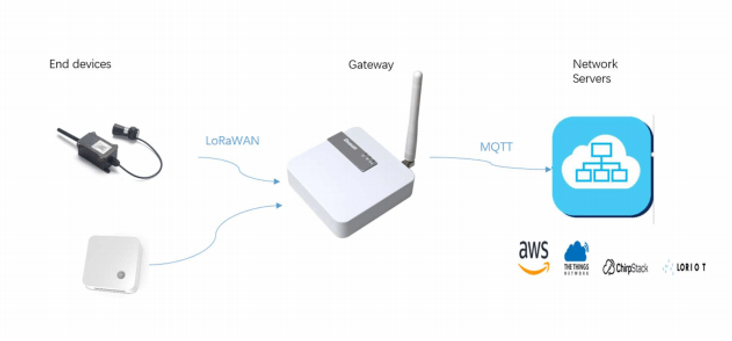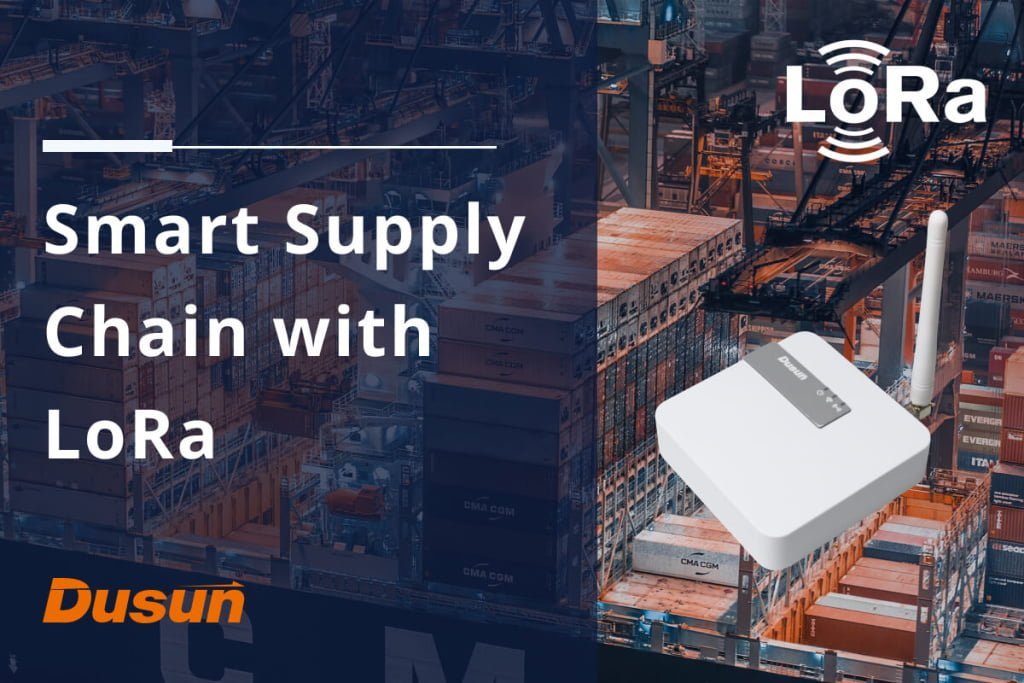Visibility along the supply chain significantly improves results for vendors, manufacturers, and consumers, say experts. That’s in part because the monitoring and real-time analysis of logistics assets allow stakeholders to quickly adapt to inherently changing conditions. It creates resilience in markets.
Theft, shipping delays, and general logistics anomalies, like bad weather, worker industrial action, or medical lockdowns are among the inefficiencies that threaten the smooth running of just-in-time production lines. The rapidly shifting stock requirements at retail and e-commerce; and other logistics-dependent verticals, such as vaccines in healthcare are also demanding increasingly better logistics.
Additionally, newly important societal issues, such as zero emissions create a desire, in industry and by consumers, to minimize transport distances. Efficiencies become possible with routing intelligence.
Tracking assets and Industry 4.0
New technologies, such as low-cost, long-range, radio-based sensor network LoRa has recently made feasible the tracking of all logistics assets, from higher-value, product-containing cartons, to vehicle fleets, rail cars, and intermodal shipping containers. That’s across the entire ground, air, and maritime sphere.
Interestingly, too, this economical, wireless-based LoRa tracking advance shifts industry one step further towards the future holy grail of what’s called Industry 4.0: That’s the idea, whereby through a combination, of tracking, analytics, and Artificial Intelligence (AI), the entire commercial process from raw material extraction from a mine, say, to livestock farming and manufacturing, and on to delivery to the customer, will be automated in the future.
All processes, in other words, will occur without any human intervention at all, pundits believe.
History
Traditionally the supply chain has operated blind. Products have been manufactured from raw materials and then quite haphazardly sent on to sales channels, such as retailers.
Insight has been seriously lacking between the making and the selling, and there hasn’t really been an economical way to tie in all of the intelligence elements in a supply-chain network.
Ensuring inventory matches demand, and products are staged close by to customers, for example, hasn’t really been possible—the information hasn’t been there.
Market alterations, too, caused by ongoing changes in consumer behavior, have historically been hard to adapt to, because of this supply-chain information gap. Responses to materials shortages, too, haven’t been fast enough.
Insight
Insight into logistics, such as where products are in the manufacturing and distribution chain, changes that. Viewing inventory, in real-time, even as it is moving through the distribution process allows for rapid and flexible market responses.
The cost of tracking has, in the past, been the deal breaker to all this. It’s not like folks haven’t wanted to do it. Asset tracking was in fact one of the earliest uses for wireless M2M (Machine-to-Machine) networks, and Industrial IoT over the last few decades. Attempts were thwarted predominantly by the cost of cellular or satellite networks, and capital costs of the equipment—if you have hundreds of sensors, all needing unique connections, that gets expensive, explains writer Mike Wong in an article in supply-chain publication EPSNews. Tethered, wired networks were never practical.
Why LoRa is better for tracking
LoRaWAN-obtained data has advantages over other wireless industrial IoT technologies, like Wi-Fi, or Bluetooth explained an engineer speaking on an industry trade panel recently. I’ve attended similar LoRa explanations at trade events in the past.
Long range is one advantage, he explained, but interestingly a key feature of LoRa is that positioning of the sensor isn’t reliant on GPS. There is a non-Global Positioning Satellite (GPS) position reporting feature “directly from the network without GPS assistance,” said Jorge Varona, vice president of engineering at Semtech. The semiconductor supplier has been a longtime proponent of LoRa. The engineer was speaking at a LoRa Alliance panel on LoRaWAN tracking solutions: How to Get Started and Scale.
Other differentiators and benefits over other IoT solutions, which he believes are killer features for tracking, include that open-source LoRa, which uses unlicensed networks, unlike cellular, can be deployed over spectrum through either public or private LoRa networks. Cellular and satellite networks can be tied-in, though, so it’s complimentary, and therefore allows for “connectivity in very remote areas,” he said.
Plus, security is bi-directional, with layers of security, he explains; and firmware updates can be performed over the network without needing a hard connection. There’s also very low power consumption, he adds. “With the ability to operate on batteries for many years.” A 10-year plus battery life is obtainable, he thinks.
Varona rounds up the benefits for tracking and logistics by explaining that LoRa and its ISM (Industrial, Scientific and Medical band) have deep penetration in concrete, steel, and indeed the ground.
Supply-chain management – asset traceability
Varona isn’t the only evangelist believer in technology. LPWAN transforms supply-chain management, claims another LoRa member from the trade body LoRa Alliance:
“IoT is enabling a new era of end-to-end supply-chain monitoring,” said Pierre Gelpí, who is Logistics Marketing Group Chair for the LoRa Alliance and LoRa Business Development Director at Semtech. He was writing in the publication Microwaves & RF. “Low-power, wide-area networks provide the connectivity.”
What he talks of is that as the volume of goods increases globally, supply chains need optimization. “Organizations need connectivity to freight transport, down to the individual package or parcel,” he writes. LPWAN or LoRa’s low cost enables this. “Makes it viable to add connectivity to lower-value assets as well as traditionally-tracked equipment like trucks, shipping containers, and rail freight.”
Other complementary uses in supply-chain
Other low-data payload applications like asset loss and recovery; resources waste awareness, and geofencing of equipment, such as in-factory loading equipment, or even pallets, can also be performed with the same LoRa concepts and equipment.
Worker safety and equipment resources can also be protected through the collection of data about how warehouse, factory, or logistics equipment is being used. That can include actual usage time and maintenance tracking, so that a vehicle, tool, or other equipment gets preventative maintenance before it breaks. It saves money and is safer.
Eliminating the need to collect this data manually avoids error and is ROI (Return on Investment) cost-effective, in part because the same technologies (LoRa) and hardware (trackers and LoRa gateways) are being used for all of the data collection in the factory or warehouse environment. Temperature and vibration data, for example, can be collected at the same time as the location.
It’s not just packages. The agriculture use case
But it’s not just the transportation of goods and traditional logistics that benefits from upgraded, smart supply-chain logistics tracking.
Livestock and food safety is the motivation behind an agriculture-based LoRa supply-chain network that Greece university academics wrote about in their June 2022-published book Artificial Intelligence Applications and Innovations.
They explain that product quality benefits when one monitors and analyzes the states of sheep, for example, as they mature. Milk refrigeration, part of what’s called Cold Chain (temperature-controlled supply chain), and milk trucks, benefit from tracking they believe. “The best way to meet them is an LPWAN-based IoT deployment,” they say.
Tracking actual livestock positions in a topographically widespread ad hoc farming environment, such as in shepherding, as well as environmental variables, like ambient temperature, also provide guides as to product condition and readiness for market. It brings us, again, one step closer to the idea of Industry 4.0—everything tracked.
Further reading:
How to get started with LoRa

Three principal building blocks come into play for a LoRa supply-chain and logistics solution. They are 1. the Internet connection to the cloud, such as AWS (Amazon Web Services); 2. the wireless LoRaWAN gateway box; and 3. the RF module (tracking device).
1. Internet Service Provider (ISP) requirements and platform
Internet connection via Ethernet, Wi-Fi 2.4 GHz or 5 GHz, or Bluetooth 5.2 uplinks data collected by the LoRa gateway to clouds and onto analytics or other apps. Alternatively, an available, existing public LoRa network can be used for data transport. Fees can be charged for that.
Cellular connections can be performed with an added cellular modem connected via the gateway’s Ethernet port. The software can tie received data into Enterprise Resource Planning (ERPs) or warehouse management systems.
2. LoRaWAN Gateway
Hash environment, industrial-level, waterproof IP66 outdoor LoRa gateways, or cheaper, but less robust indoor gateways are powered by POE (Power Over Ethernet) and 5V DC input.
Unlicensed ISM frequency bands are region-specific (EU, US, and Australia use different bands, for example). Dusun’s DSGW-090B indoor LoRaWAN Gateway Lite offers a line-of-site range of up to 15 km with coverage of about 2 km in urban areas, for all bands, for example.
ChirpStack gateways integrate with the ChirpStack open-source network server used for setting up LoRaWAN. ThingsBoard is an open source IoT platform with a network server also used.
Further reading:
3. Tracking devices (the position sensor)
LoRa RF wireless modules, like the MOKO Smart LoRaWAN GPS Tracker LW001-BG-PRO, allow for connections to public and private clouds through the aforementioned gateways. Hardware acceleration axis sensors can detect movement and idle states; vibration detection can report possible package damage.
Modules are affixed, using straps or other attachments, to the trackable asset, such as a vehicle, carton, or in the case of livestock farming – the animal. Replaceable batteries can last five years.



















